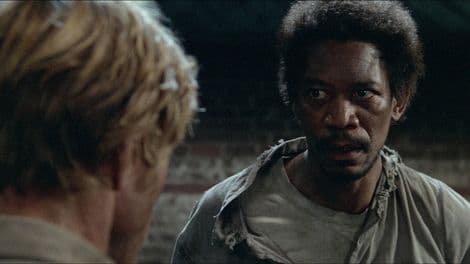Navigating the Silver Screen: Unpacking "Best," "Worst," and Everything In Between in the World of Movies
Have you ever debated if "The Godfather" is cinema’s best? Perhaps you wonder if a hidden gem is ignored and unappreciated. You are not alone. Movies stir opinions, and "best" and "worst" are often slippery eels. Let’s explore the chaos of movie evaluation.
The Subjectivity Symphony: Why "Best Movie Ever" is a Personal Playlist
Declaring a movie the "best" is like claiming vanilla is the top ice cream flavor. This bold statement often ignites outrage among chocolate and strawberry fans. Taste is a fickle beast. A film that thrills you may bore someone else. Take the "best actor" debate. Is it Daniel Day-Lewis with his three Oscars? Or another actor who resonates with you?
Popularity shifts constantly. A film's status can fluctuate based on the polling method and the pollsters involved. And "worst movie"? Such glorious depths exist! One viewer's trash can become another's cult classic. The scary films vary too. What terrifies one may amuse another.
Critics vs. Crowds: When Highbrow Meets Mainstream
Here’s where it gets interesting. Critics, those professionals with a knack for film evaluation, often praise movies like "The Godfather." They dissect camera angles and dialogue nuances. Meanwhile, many moviegoers just seek entertainment or a good cry. Sometimes, acclaim and popularity align perfectly. Other times, they dance in separate ballrooms.
The Popularity Puzzle: Polls, Rankings, and the Algorithm Gods
Ever wonder how those "best movies of all time" lists form? They often result from polls and ranking methods with unique criteria. Some lists favor critical hits while others prioritize box office totals or online votes. Sites like IMDb and Rotten Tomatoes use complex formulas to determine scores. So, when reviewing charts, recall that popularity is fluid.
Decoding Movie Metrics: Box Office Gold, Rotten Tomatoes Scores, and Cultural Footprints
How do we measure a movie’s success? Beyond opinions, cold numbers exist. Let's investigate the metrics Hollywood uses for evaluation.
Box Office Bonanza or Bust? The Almighty Dollar Speaks
The box office is a public and often harsh indicator of a movie’s fate. Gross earnings show if the film resonated or fell flat. Consider "Avatar," the highest-grossing film worldwide with earnings of over $2.9 billion. "Deadpool & Wolverine" holds the record for highest-grossing R-rated movie. Samuel L. Jackson reigns as highest-grossing actor, with films earning over $14.6 billion.
For every box office champ, tales of woe exist. Enter "Zyzzyx Road," dubbed the lowest-grossing film ever, making a paltry $30 at the box office. Then, there are mega-flops like "John Carter," which lost an estimated $200-255 million, making it a legendary disaster.
Rating Rhapsody: Rotten Tomatoes, IMDb, and the Quest for a Perfect Score
Beyond dollars, we have rating systems. Sites like Rotten Tomatoes aggregate reviews into neat percentages and star ratings. A perfect 100% on Rotten Tomatoes is rare. "Leave No Trace" holds that honor with perfect scores. "Singin' in the Rain," another classic, has the same 100% rating.
What about the dreaded zero percent? "Ballistic: Ecks vs. Sever" is often found in that category. It consistently earns the infamous zero percent badge of dishonor, representing utter cinematic failure.
Viewership Vanguard: Netflix Numbers and the Streaming Revolution
In streaming's age, box office numbers aren't alone anymore. Netflix measures success through viewership. "Red Notice," an action-comedy, is its most-watched movie ever. For series, "Squid Game" emerged as a global phenomenon, racking up 265.2 million views in its first season. These stats show how streaming shapes content consumption.
Influence and Awards: The Enduring Legacy and Golden Statuettes
Some movies leave lasting marks beyond financial and rating success. Films like "The Godfather" and "Citizen Kane" are culturally significant, shaping storytelling and societal conversations along the way. They are not merely films; they are cultural milestones.
Also, awards matter. The Oscars represent industry recognition's pinnacle. Daniel Day-Lewis's three Best Actor Oscars exemplify critical acclaim’s allure and award season glory.
Underrated Gems and Forgotten Treasures: Seeking Out the Cinematic Underdogs
Now, let's explore overlooked and underappreciated films. In a sea of content, excellent movies can fade away, becoming hidden gems waiting to be found.
TV's Twilight Zone of Underrated Shows
Television is vast. Many brilliant shows don't receive deserved recognition. Take "The Wire," often hailed as one of the best but lacking mainstream success. "Mr. Robot," a complex thriller, also flew under the radar despite acclaim. Other shows like "Black Mirror" grew from cult favorites to wider success.
Forgotten Films: Lost in the Sands of Time?
Movies too can fade from memory despite past praise or moderate success. "The Mission" often gets overlooked despite its stunning visuals. "Wavelength," an experimental film from the 80s, remains niche among cinephiles. "Titus," a bold Shakespeare adaptation, merits more attention. Films like "Rob Roy," "Communion," and "Hamlet" often fade into obscurity despite offering exceptional narratives.
Forgotten films are rarely discussed as cinematic masterpieces. They have strengths and merits. These films are ripe for rediscovery. They offer unique experiences for those willing to seek them out.
The Rarest of the Rare: Hunting for Cinematic Unicorns
Then come truly rare films. These films are like unicorns. One such example is "The Chekist," a Russian film from 1992. It is shrouded in obscurity. Other examples include "Pentimento" (1979), "A Real Young Girl" (1976), and "Maladolescenza" (1977). Films like "Mum & Dad" (2008) and "The Haunting of Julia" (1977) also fit this category. These films often exist in the fringes of availability. They are discussed in hushed tones by hardcore buffs and collectors. Tracking down these gems is like a cinematic treasure hunt.
The Mount Rushmore of Movies: Contenders for the "Best of All Time" Crown
Let's revisit the subjective battlefield of "best movies ever." Answers to this question remain elusive. However, certain films consistently rise in discussions. These are cinematic heavyweights. They inspire awe and debate.
"The Godfather": An Offer You Can't Refuse (to Watch)
"The Godfather" (1972) often garners nods of agreement. Cinephiles consider this *the* best movie of all time. Francis Ford Coppola's mafia film is a storytelling achievement. Its influence is undeniable. It transcends genre and becomes a cultural phenomenon. It benchmarks cinematic excellence.
"The Shawshank Redemption": Hope Springs Eternal (and Ratings Soar)
Next is "The Shawshank Redemption" (1994). This film consistently tops IMDb's user charts. Audiences resonate with its themes of hope and perseverance. It is both a crowd-pleaser and critically acclaimed. Its 9.3 IMDb rating reflects its enduring appeal.
"The Dark Knight": Superhero Cinema Elevated
Christopher Nolan's "The Dark Knight" (2008) enters the "best ever" conversation often. It elevates the superhero genre. The film is complex and visually stunning. Its success in both critical and commercial spheres solidifies its standing among the greats.
"Citizen Kane": The Groundbreaking Pioneer
"Citizen Kane" (1941) is a cinematic landmark. Orson Welles's film is hailed as the #1 best ever by many critics. It redefined filmmaking with innovative techniques and narrative structure. This film pushed boundaries and remains influential.
"Forrest Gump": America's Sweetheart of Cinema
"Forrest Gump" (1994) holds a special place in many hearts. Many consider it America's favorite movie. It is a nostalgic journey through American history seen through Forrest's eyes. Its emotional resonance makes it a beloved classic.
"Titanic": The Blockbuster That Broke Records (and Hearts)
James Cameron's "Titanic" (1997) is a cultural phenomenon. It grossed over $2.195 billion as of 2023, showcasing its appeal. Beyond box office success, it captivates audiences with its visuals and emotion. Its impact secures its place in the "best of all time" conversation.
"12 Angry Men" and "Schindler's List": Powerful Drama and Historical Weight
Other contenders include "12 Angry Men" (1957) and "Schindler's List" (1993). "12 Angry Men" offers tension and dialogue in a jury room setting. "Schindler's List" addresses the Holocaust with honesty and depth. Both films exemplify cinematic excellence through complex themes.
The Bottom of the Barrel: Celebrating (and Cringing At) the "Worst Movies of All Time"
Now, let's explore cinematic infamy. Alongside "best" movies, exist the "worst." These films critics love to hate are legendary for wrong reasons. Let's revel in their awfulness.
"Ballistic: Ecks vs. Sever": Zero Percent, One Hundred Percent Awful?
"Ballistic: Ecks vs. Sever" (2002) has a 0% Rotten Tomatoes score. This score reflects its universally panned reception. It's often labeled as the "worst movie ever." It serves as a cautionary tale for filmmakers.
"Zyzzyx Road": Box Office Disaster, Cinematic Curiosity
"Zyzzyx Road" (2006) holds the record for lowest box office gross. It is more than a financial failure; it’s a cinematic misfire. Its obscurity has given it notoriety, becoming a point of curiosity for film aficionados.
"Disaster Movie," "Manos: The Hands of Fate," and "Birdemic: Shock and Terror": A Trio of Terrible
Films like "Disaster Movie" (2008), "Manos: The Hands of Fate" (1966), and "Birdemic: Shock and Terror" (2010) round out this rogues' gallery. "Disaster Movie" showcases lazy humor. "Manos" is a low-budget classic known for its bizarre plot. "Birdemic," a romantic thriller, is famous for its atrocious effects. Despite being bad, these films hold a peculiar cult status.
Decoding Movie Ratings: G, PG, R, and the Alphabet Soup of Content Guidance
Have you wondered what those letters mean? G, PG, PG-13, R, NC-17 – it's a secret code for content. Let's understand the MPA rating system designed to guide potential viewers.
MPA Rating System: A Guide to Content Suitability
The Motion Picture Association (MPA) rates films for content suitability. This system provides guidance for parents regarding films for their children. Here's a quick overview:
- Rated G: Suitable for all ages, with nothing offensive for children.
- Rated PG: Parental guidance suggested. It may contain material some parents find unsuitable.
- Rated PG-13: Parents strongly cautioned; may include strong language or violence.
- Rated R: Restricted for viewers 17 and older without parental guidance.
- Rated NC-17: No children under 17 admitted; contains explicit adult material.
Legal Nuances: NC-17 and the Obscenity Line
An NC-17 rating doesn't mean the movie is obscene legally. Obscenity has a specific definition that differs from this rating. The MPA believes NC-17 content isn't suitable for under-17 audiences. Sometimes filmmakers release films with this rating for artistic reasons.
Content Descriptors: Beyond the Letter Grade
In addition to letter ratings, the MPA uses descriptors to detail why a film received a certain
Rating. Descriptors like "violence," "sex," "drug abuse," "language," or "nudity" help parents understand content. They enable informed decisions about movie viewing for families.
Actors and Filmmakers: Stars and Talents in Hollywood
Movies are collaborative art forms. Actors and filmmakers drive these stories. Let's highlight the people who bring these tales to life, from celebrated stars to unsung heroes.
"Best" Actors: Subjective Perspectives
"Best actors" is subjective. What defines a "best" performance varies by viewer. Some focus on technical skill, like Daniel Day-Lewis’s transformations. Others value emotional range and audience connection. Personal preference influences the title of "best" actor.
Underrated Actors: Hidden Gems
Hollywood has talented actors who haven’t reached A-list fame. These underrated gems deliver powerful performances yet remain unnoticed. Edward Norton, Gary Oldman, Sam Rockwell, Joseph Gordon-Levitt, and Philip Seymour Hoffman (missed) are examples. They all deserve wider recognition for their work.
Highest-Grossing Actors: Box Office Kings
On the other side are highest-grossing actors. They star in films that earn vast sums at the box office. Samuel L. Jackson leads with over $14 billion in gross earnings. These stars often appear in blockbuster franchises, tying their names to commercial success.
The Career Rollercoaster: Making and Breaking Stars
The movie industry is high-stakes. The success or failure of films significantly impacts careers. A hit can boost an actor's status and pay, while a flop can hurt future roles. External factors like marketing and audience trends also play crucial roles in an actor's fate.
Movie Production and Distribution: The Process Explained
How do movies get made and seen? It involves budgets, marketing, distribution strategies, and revenue streams. Let’s explore movie production and distribution.
Budgets: From Low to High
Movie budgets vary greatly. They range from low-budget independent films to large blockbusters. Low-budget films can succeed despite constraints, exemplified by "The Blair Witch Project" (1999), made for $60,000 and grossing nearly $250 million. Creativity is often key.
High-budget films often involve superhero titles or epics, costing millions to produce and market. These carry high financial risks but can yield huge returns. Budget influences casting, special effects, marketing, and distribution in production.
Marketing Magic: Selling the Dream
Marketing convinces audiences to see a movie. Effective campaigns generate buzz, create anticipation, and boost ticket sales. Poor marketing can jeopardize even quality films. "John Carter" (2012) is an example, flopping due to ineffective strategies. Marketing involves trailers, posters, and advertising.
Release Strategies: Theatrical vs. Streaming
Movie release methods have changed recently. The traditional theatrical release is still crucial but streaming platforms matter more now. Some films get wide releases in thousands of theaters. Others target limited audiences for awards or buzz. Movies are increasingly released directly to streaming services.
Ancillary Revenues: Beyond the Box Office
A film that performs poorly at the box office isn’t always a total loss. Ancillary revenues help. These include streaming rights, home media sales, broadcast rights, and merchandise. Streaming and home media significantly impact revenue in today's market.
Lost and Unmade Films: Cinematic Ghosts
Let’s discuss lost and unmade films. Cinema history has many projects that never happened. Sadly, numerous early films are lost forever, representing a reminder of preservation challenges.
The Largest Movie Never Made: Unfulfilled Visions
Ambitious filmmakers often dream of projects that remain unmade. Orson Welles’s "Heart of Darkness," Stanley Kubrick's "Napoleon," and Alfred Hitchcock's "Kaleidoscope" are examples of ambitious endeavors that faced hurdles. They linger as tantalizing "what ifs" in film history.
The Extent of Lost Films: A Historical Gap
A significant portion of early cinema is lost. Martin Scorsese’s Film Foundation estimates that over 90% of films before 1929 have vanished. The Library of Congress believes 75% of silent films are gone forever. Losses stem from film deterioration and lack of preservation.
The absence of these works creates gaps in our understanding of film history. It highlights the importance of preserving film for future generations. The silent era endured immense loss, leaving behind fragments of a vibrant art form.













Responses (0 )